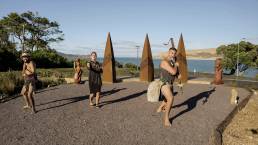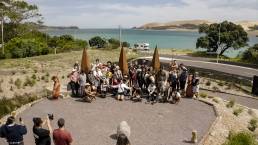Experience design is central to our development process from the outset.
Once the intent of the experience has been clearly defined and the narrative created, we begin to plan the experience itself. We map out the end-to-end visitor experience, defining the visitor flow, key features, and the learning objectives throughout.
At each of these points we consider the senses; sight, sound and touch. Using them to enhance the experiences and help create impactful moments of tension or drama, calm and reflection, or surprise and delight, we push beyond the limits of what seems possible.
As part of the experience design process, one of the key questions that we ask ourselves is: What lasting impression can we give our audience?
We all learn in different ways, so by using a multi-sensory approach to experience design, it gives us the opportunity to engage new audiences, or with existing ones in entirely new ways. Importantly, we also consider accessibility standards and create experiences that are sensitive to others’ needs.
A great example of this is our project that we created for Manea Footprints of Kupe, which you can find out more about in the Manea Footprints of Kupe Experience Design case study.
Got a question, need a hand, or want to partner up?

